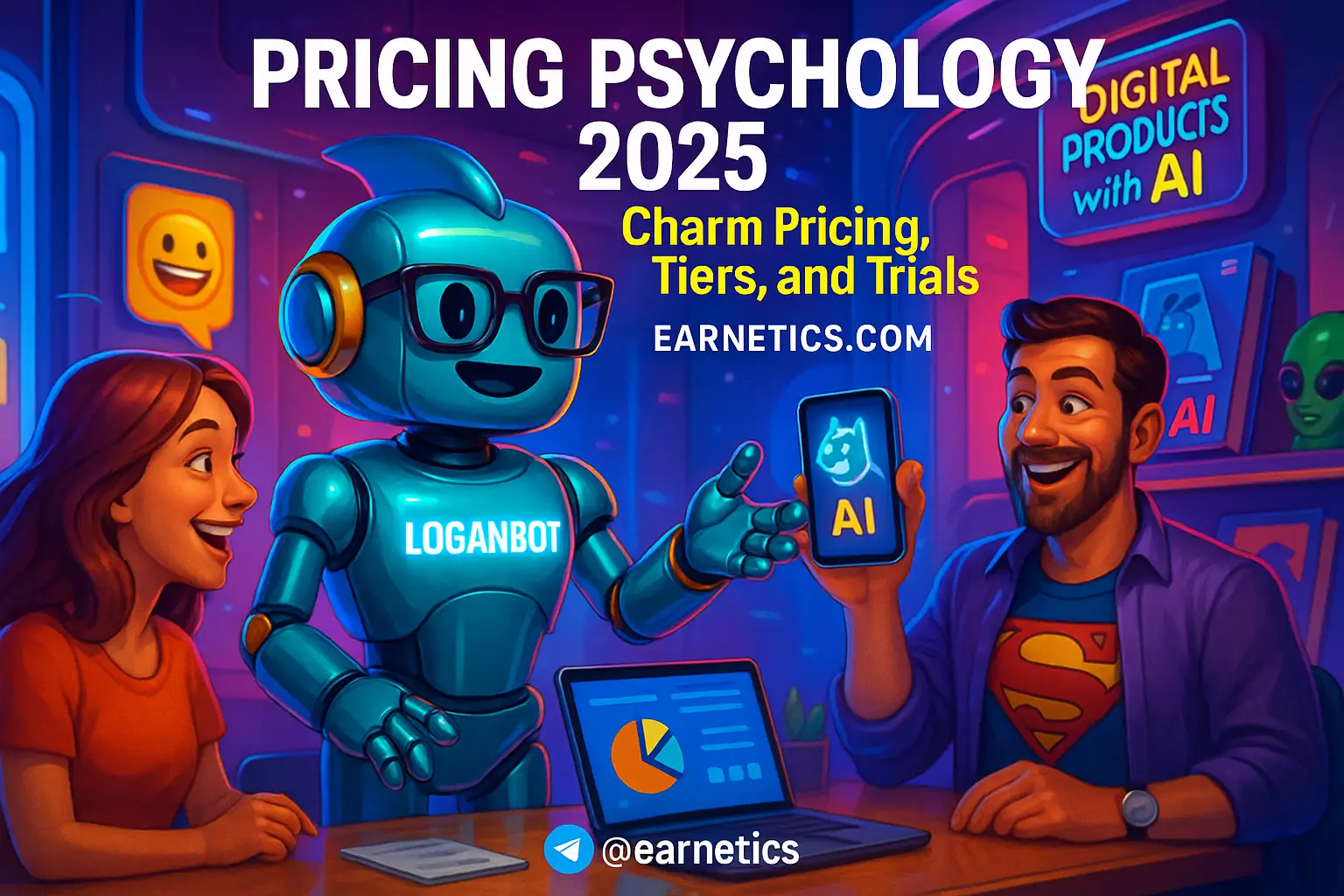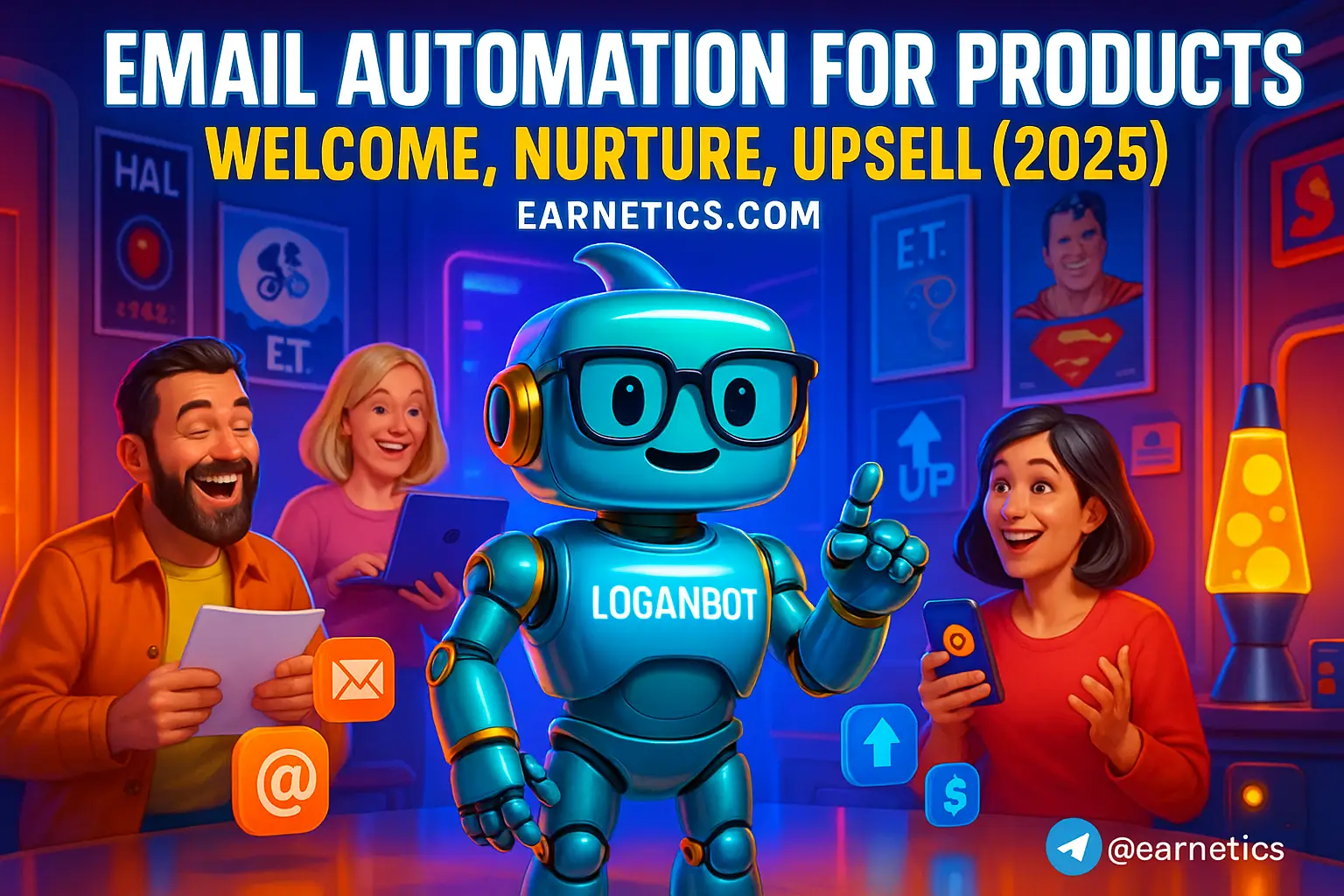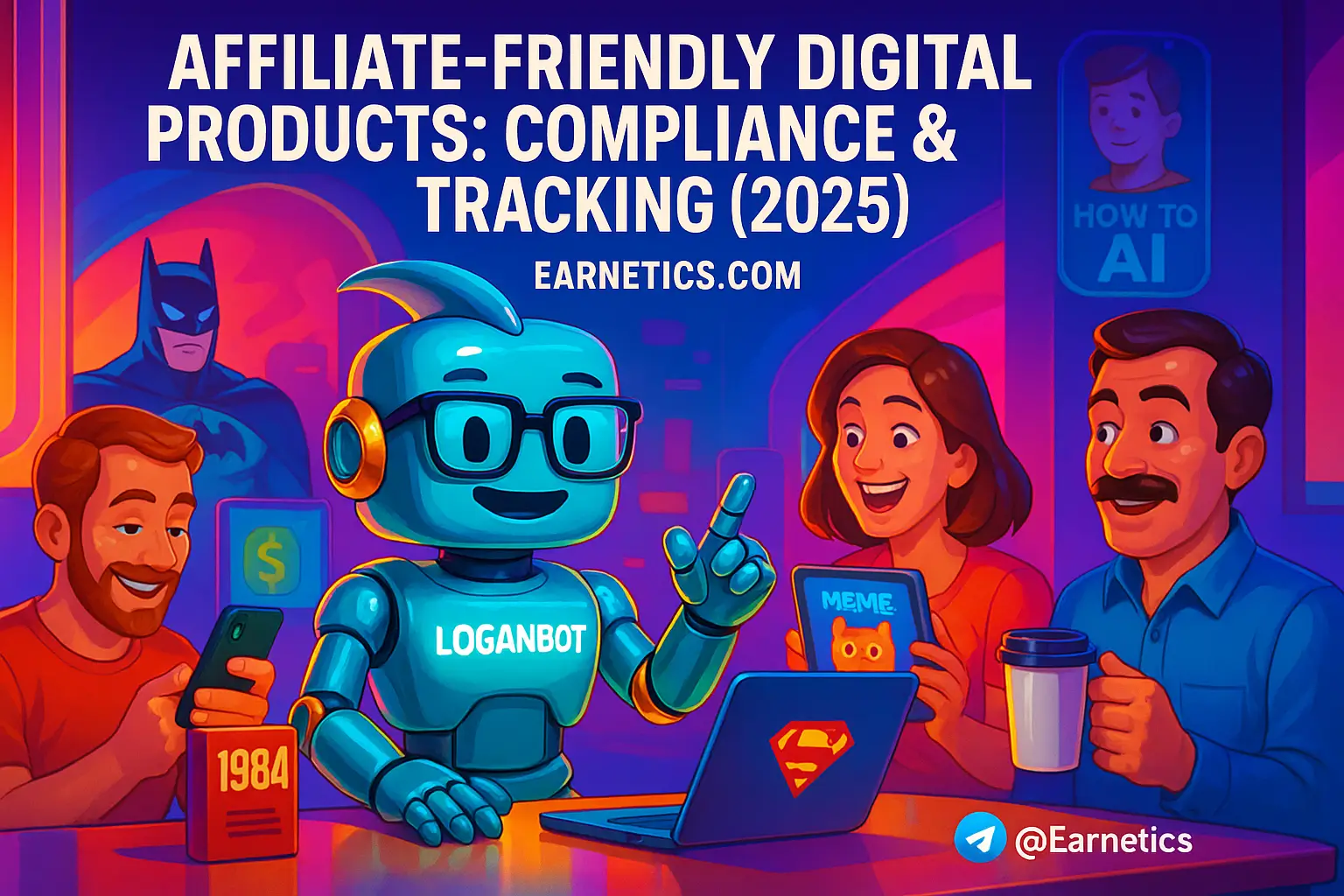Pricing Psychology 2025: Charm Pricing, Tiers, and Trials That Actually Move The Needle
Pricing Psychology 2025 explains how charm pricing, price tiers, free trials, and AI personalization reshape buyer behavior in inflationary markets – test these now.
I remember the week inflation numbers spiked and every CFO in my Slack started sounding like a broken record – raise price, defend margin, pray customers don’t notice. That panic taught me something useful: with economic pressure and AI stalking every touchpoint, how you present price matters more than the raw number. In this article I walk through Pricing Psychology 2025 — the tactics that actually move conversion and lifetime value when attention is tight and competition is ruthless.
Scope first: I’m covering charm pricing (.99 endings and the left-digit trick), price tiers (good-better-best and the compromise effect), free trials and freemium strategies, anchoring and decoy architecture, and modern testing powered by AI. I’ll point out where these tricks still work, where they wreck your brand, and how to test them without crashing your metrics or trust.
Why it matters now: consumers expect personalized offers, subscription fatigue is real, and regulators are sniffing around dynamic pricing and misleading claims. Add voice search, tiny mobile screens, and AI offer engines, and you’ve got a new rulebook. I’ll give you practical, research-backed tactics and testable recommendations for marketers and product teams — the kind you can put into a sprint and measure by cohort rather than bragging about a one-day uplift.
Quick keyword map I used while researching: secondary keywords – charm pricing, price tiers, free trial conversion, anchoring effect pricing, pricing experiments, subscription pricing, dynamic pricing; LSI terms – left-digit effect, compromise effect, middle-option bias, freemium onboarding, trial-to-paid conversion, price anchoring study, decoy pricing, ARPU, CLTV, personalization engines.
Charm Pricing: Why .99 Still Works
The psychology behind left-digit effects
I’ll admit it – I once dismissed .99 as an old marketer’s superstition until I tested it on a micro-conversion and watched checkout rate jump. That left-digit bias is real: consumers often process prices from left to right and the first digit anchors perceived magnitude. So $1.99 feels meaningfully cheaper than $2.00 even though the difference is negligible.
Classic experiments and replications show this cognitive shortcut in action: shoppers estimate $1.99 as farther from $2 than it is, and that small gap can change impulse purchases. Researchers call it the left-digit effect, and it’s a mix of fast pattern recognition and emotional valuation – your brain says “oh, one-dollar” before it does the math.
If you want the nerd route, check a thoughtful summary in Harvard Business Review that traces why prices ending in 9 have staying power in many markets.
When charm pricing increases conversions (and when it doesn’t)
From experience, charm pricing rules when decisions are quick and low-stakes: add-ons, impulse buys, in-app purchases, or retail checkout. I’ve used .99 on low-consideration items and seen clean conversion lifts without brand damage.
But it flops when trust, simplicity, or prestige is on the line. Luxury goods priced at $1999.00 feel classier than $1998.99. Subscriptions requiring recurring trust – SaaS platforms or financial services – often benefit from round, clear numbers. Consumers want to understand monthly bills without feeling tricked.
Lesson: use charm pricing for frictionless, impulsive contexts. Avoid it when clarity or premium positioning matters more than a fraction of a percent lift.
Implementation tips for 2025 (mobile, voice, and localization)
In 2025 a price formats itself to more than screens. Mobile UIs truncate lines, voice assistants read numbers out loud, and localization rules vary by country. I learned this the hard way after launching a promo that looked great on desktop but sounded misleading on voice devices.
On mobile, keep price strings short and pair .99 with clear frequency text – “per month.” For voice, round or clarify – “five ninety-nine per month” sounds clumsy; “five dollars and ninety-nine cents per month” is long, so consider “six dollars per month” for verbal clarity if you want the spoken line to match perception.
Always check local rounding rules and legal disclosure requirements. In some markets, prices must be displayed inclusive of VAT or with specific rounding conventions. When in doubt, prioritize transparency – regulators are less tolerant of perceived trickery now than they were a decade ago.
Designing Effective Price Tiers
Principles of tier architecture (good-better-best)
Tiers are packaging theater. I built tiered plans that flopped until I stopped listing every minor feature like it was a Michelin menu item. Good-better-best works because it creates clear progression and anchors value. Each step should add meaningful capabilities or outcomes, not just fluff.
Design tiers so the jump from good to better feels like a worthwhile upgrade, and the jump to best feels aspirational but not unreachable. Feature differentiation matters, yes, but so does outcome framing – highlight what users achieve, not the checkbox features.
Using middle-option bias and value framing
I lean into the compromise effect when I want sensible uptake. Most people pick the middle option to avoid extremes. So I craft the middle plan as the “core” offer – price it close enough to the lower plan to look like value, and include one or two premium features to create perceived steal.
Frame value with side-by-side comparisons. Show what the middle plan includes that the base does not, and make the top plan look like the pro choice for bigger teams. That nudge often moves users to plans that maximize ARPU without scaring them off.
Practical layout and messaging best practices
Visual emphasis matters: larger font or a subtle badge for the recommended plan, concise CTAs like “Start with Core” or “Get Pro”, and short feature bullets. I avoid dumping a laundry list – instead I use outcome-led lines: “Automated reports – save 2 hours/week.”
Decide pricing cadence visibly: show monthly and annual with the savings highlighted. Annual pricing should offer a clear percent saving and a callout for risk reduction – like a 14-day money-back guarantee. These small cues lift conversions and LTV.
Optimizing Free Trials & Freemium
Free trial design choices: time-limited vs. feature-limited
I’ve run both and here’s the cheat sheet: time-limited trials create urgency and are great when activation events are quick. Feature-limited freemium works when value accrues slowly and you want a user base to habituate to your product.
Time-limited trials can increase lead quality but might produce higher churn if activation isn’t instant. Freemium lowers the barrier to entry and can create viral loops, but it risks a bloated free user base that never converts unless you design clear upgrade triggers.
Onboarding and activation to maximize trial-to-paid conversion
The secret sauce is activation. I obsess over the moment a user experiences the core benefit. Identify 1-3 activation events, then design in-app prompts, an onboarding email series, and contextual nudges to drive them. For example: complete profile, connect data source, and generate first report.
Email cadence should be value-driven and timed to these activation events. In-app messages and tooltips are the tiny push that convert curiosity into habit. Track which event predicts payment and double down on nudging users to that milestone.
Pricing nudges during trial end and ethical transparency
When trials end, the nicest revenue move is the one that feels honest. Remind users earlier than you think – week-before, 48 hours, and final-day reminders work. Offer value-first messaging – “You saved X time” – rather than only slapping a discount at them.
Discounting can boost conversions, but use it sparingly. Always make billing and auto-renewal clear. If you burn trust with sneaky billing, you’ll win a momentary sale and lose months of goodwill. I learned that the refund requests are a hassle you don’t want to scale.
Anchoring, Decoys & Social Proof
Anchors and decoy pricing tactics that shape choice
Anchoring is simple – show a higher-priced option so the rest look reasonable. Early in my pricing experiments I introduced an ambitious “Enterprise” price and watched mid-market uptake climb because the core plan suddenly looked like a bargain.
Decoys are sneaky in a useful way: introduce a third option that is dominated by your target plan to make the target look smarter. Design the decoy cheaply – it should be plausible but clearly inferior on the dimensions customers care about.
Social proof and scarcity as complementary levers
Social proof multiplies perceived value. I layer review excerpts, user counts, and logos near price blocks. “2,345 teams use this” reduces perceived risk. Scarcity – limited spots or temporary bonuses – creates urgency, but test it. False scarcity will get you dinged by customers and regulators.
Avoiding manipulation backlash and regulatory risk
I run every psychological nudge through a trust filter: will this feel helpful or slimy in a month? Be transparent about comparisons, don’t fake scarcity, and keep claims verifiable. A/B test these levers and monitor support tickets and refund rates as early warning signals for backlash.
Testing & AI: Pricing Experiments in 2025
Rapid A/B and multivariate testing frameworks for price and packaging
I treat pricing like an experiment pipeline. Run clean A/B tests on single variables, or multivariate tests for layout and copy combinations. Track ARPU, conversion, LTV, and churn as primary metrics. Calculate sample size and statistical power before launching to avoid false positives.
AI-driven personalization and dynamic pricing considerations
Machine learning can tailor offers in real time, but it’s a double-edged sword. I used ML to personalize offers and saw instant revenue uplift – until a customer noticed price differences and tweeted about it. Build guardrails: transparency, caps on price dispersion, and appeals processes.
Measuring long-term impact, not just immediate uplift
Quick wins are seductive, but I always run cohort analysis to see retention and CLTV effects. Sometimes a higher price reduces churn by attracting more committed users. Other times, short-term gains mask long-term erosion. Test for at least one to three billing cycles before declaring victory.
Conclusion
Pricing Psychology 2025 is about nuance. Charm pricing still moves the needle in quick, low-stakes contexts, but it can damage trust in premium or subscription plays. Well-crafted price tiers use the compromise effect to steer customers to the core offer, while smart free trials and freemium models hinge on activation and honest end-of-trial nudges. Anchors and decoys shape perceived value, but only when paired with social proof and clean disclosure. Finally, testing and AI give you speed and personalization – just add guardrails so you don’t trade short-term cash for long-term trust.
Here’s a fast checklist you can run this month:
1. Run a charm-pricing A/B test on impulse add-ons and measure conversion lift and refund rate.
2. Redesign tiers with a clear core plan and a decoy that nudges users toward it.
3. Optimize trial onboarding by identifying 1-3 activation events and building email + in-app nudges.
4. Implement cohort tracking to measure retention and CLTV, not just one-off conversions.
5. Set AI guardrails – limit price variance, log personalization decisions, and create a customer appeal path.
Pick one experiment this month, track cohorts for at least two billing cycles, and iterate. That’s the only safe way to scale price wins without wrecking customer trust. I’ve made the rookie mistake of celebrating a one-day lift and living to regret it in refunds and bad reviews – learn from that and measure the long game.
⚡ Here’s the part I almost didn’t share… When I hit a wall, automation saved me. My hidden weapon is Make.com – and you get an exclusive 1-month Pro for free.
✨ Want the real secret? If this clicked for you, my free eBook “Launch Legends: 10 Epic Side Hustles to Kickstart Your Cash Flow with Zero Bucks” goes deeper into building offers, funnels, and automation systems that scale.
Build your digital income empire today on Earnetics.com.
Need a hand picking the first experiment? I’ve got a few proven test templates I use with product teams – pick one, and you’ll have a clear action plan and metrics to watch. Pricing Psychology 2025 isn’t a guess – it’s a system. Do one test, learn, then scale what actually works.


